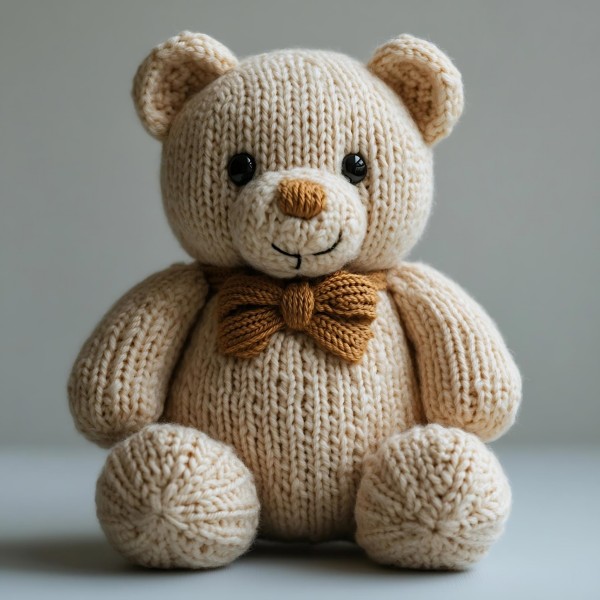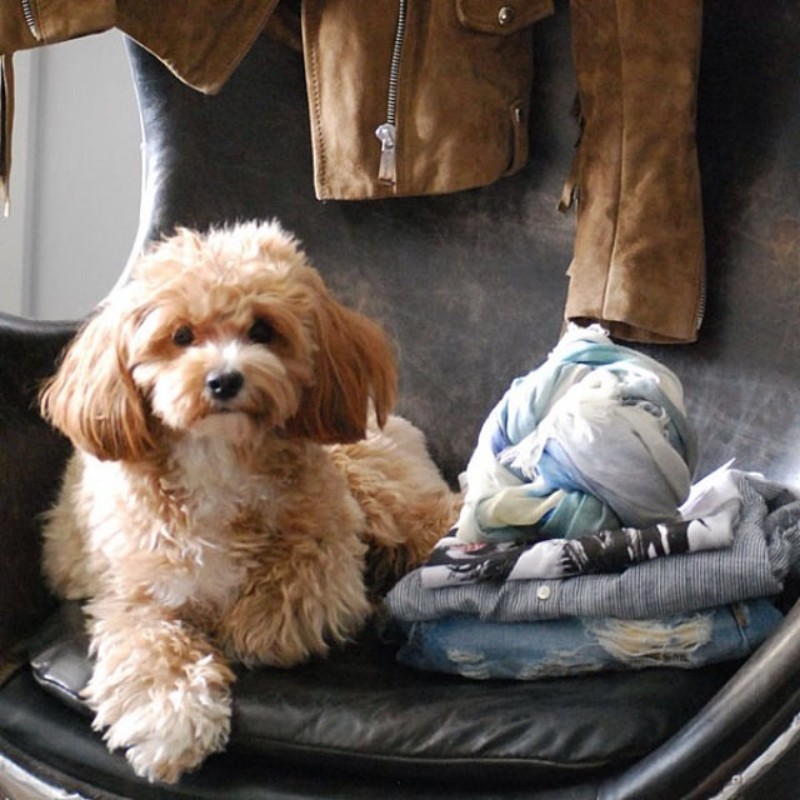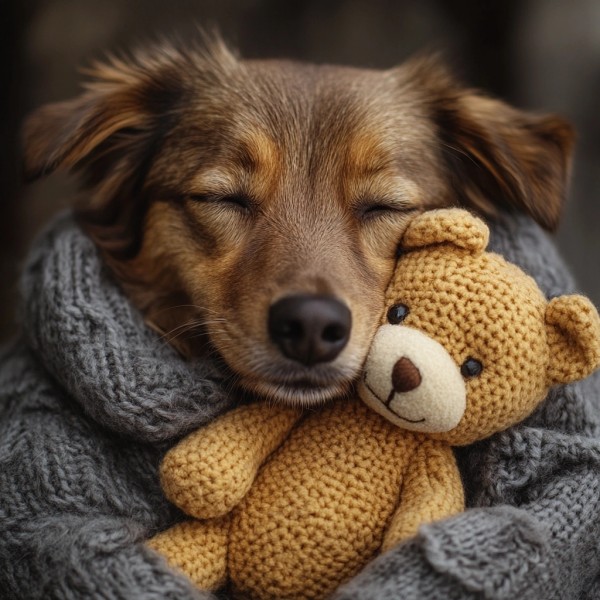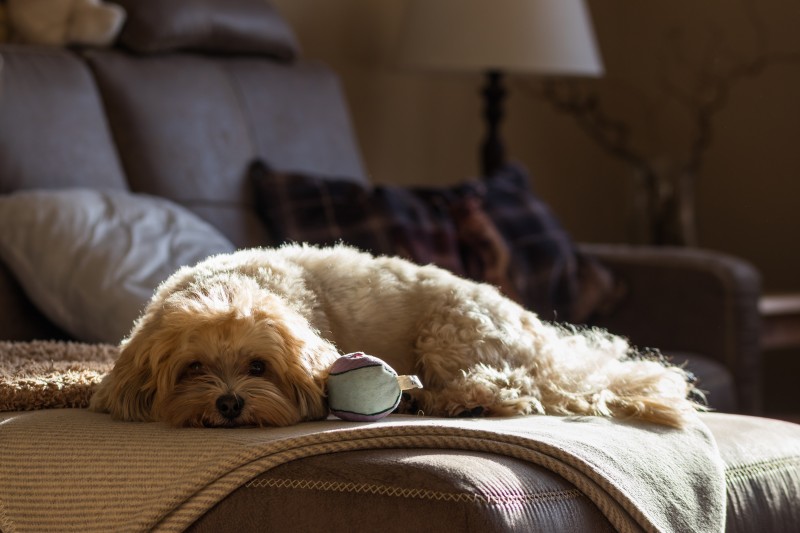As pet owners, we want our little furry friends to have the best of everything, especially when it comes to playtime. Ensuring that your puppy’s toys are not only fun but also safe is crucial for their well-being. That’s why we’ve gathered some invaluable insights from satisfied customers who’ve discovered the perfect blend of safety and entertainment in our range of puppy toys. From heartwarming stories to practical advice, these testimonials highlight why our products have become a favorite among puppy parents worldwide.
The Importance of Safe Toys for Puppies
When it comes to raising a puppy, providing them with safe toys is not just about keeping them entertained—it’s a crucial aspect of their well-being. Puppies, with their natural curiosity and playful spirits, are bound to explore their surroundings, and this often means putting objects in their mouths. That’s why the importance of choosing the right toys for your furry friend cannot be overstated.
Dental Health: A Toy’s Role in Preventing Gum DiseaseChewing is a natural behavior for puppies, as it helps them with teething and also keeps their teeth clean. A safe toy can be a great dental aid, gently massaging the gums and removing plaque, which can prevent the development of gum disease later in life. This not only maintains the health of their smile but also their overall health, as oral issues can lead to more serious systemic problems.
Mental Stimulation: The Cognitive Benefits of PlayPlaying with toys stimulates a puppy’s mind, encouraging problem-solving skills and cognitive development. Interactive toys that require the puppy to figure out how to use them or treat-based puzzles can keep their brain engaged and help prevent boredom, which can lead to destructive behavior. Mental stimulation is as important for a puppy’s development as physical exercise, ensuring a well-rounded and balanced pet.
Physical Activity: Keeping Puppies Fit and HappyPuppies need regular physical activity to stay healthy and prevent obesity, a common issue in many canines. Safe toys that encourage playtime can help you ensure your puppy gets the exercise they need. From tug-of-war ropes to ball-chasing toys, these items can be a fun part of your daily routine and contribute to your puppy’s physical fitness.
Socialization: Building Confidence and FriendshipPlaying with toys can also be a social activity. Puppies often enjoy playing with other dogs, and having the right toys can facilitate these interactions. Toys that are suitable for group play can help your puppy learn social cues and develop essential skills for building friendships. This interaction can also boost your puppy’s confidence, especially in new situations or around other pets.
Safety First: Materials and DurabilityThe safety of a toy is paramount. It should be made from non-toxic materials, free from sharp edges, and designed to withstand rigorous play. Toys that are too small or can be easily torn apart can pose a choking hazard, while toys with parts that can come loose can cause internal injuries. Ensuring that your puppy’s toys are safe means you can relax and enjoy the moments of play without worry.
Longevity: Investing in Toys That LastA high-quality toy that can withstand the test of time is a wise investment. Puppies are often rough on their toys, and investing in durable items means you’ll spend less on replacements. A well-made toy can last through multiple stages of your puppy’s life, from teething to adulthood, providing continuous enjoyment and utility.
Health Monitoring: Watching for Signs of WearEven the safest toy can become hazardous if it starts to fall apart. Regularly inspect your puppy’s toys for signs of wear and tear, such as frayed strings, loose parts, or any material that might be breaking down. Promptly remove any toy that has become unsafe to prevent accidents and maintain your puppy’s safety.
Educational Value: Toys with a PurposeSome toys are designed not only for play but also for education. For example, puzzle toys can help puppies learn to identify different shapes, colors, and textures. This type of toy can be particularly beneficial for puppies with a lot of energy or those that are prone to separation anxiety, as it provides a constructive outlet for their excitement and helps them stay calm.
Emotional Bonding: Sharing Quality Time TogetherToys can be a way to deepen the bond between you and your puppy. Engaging in play sessions with your puppy can be a joyful experience, offering a chance to bond over shared activities. Whether it’s fetching a ball or rolling a plush toy, these moments can be cherished memories that strengthen your relationship.
In conclusion, the importance of safe toys for puppies cannot be underestimated. From supporting their physical and mental health to fostering social skills and emotional connections, the right toys can play a vital role in your puppy’s development. Always prioritize safety, durability, and educational value when selecting toys, and remember that playtime is a cornerstone of a happy and healthy puppyhood.

Choosing the Right Materials for Puppy Toys
When it comes to selecting toys for your adorable puppy, the choice of materials is crucial. Not only do they affect the durability and functionality of the toy, but they also play a significant role in ensuring your pup’s safety. Here’s a closer look at what materials to consider for puppy toys:
-
Natural rubber is a popular choice due to its non-toxic and eco-friendly nature. It’s soft yet durable, perfect for teething puppies who are eager to chew and gnaw. Plus, rubber is resistant to bacteria, which is essential for maintaining good oral hygiene for your puppy.
-
Durable plastics are another go-to material for puppy toys. These toys are often treated with non-toxic substances and can withstand a lot of abuse from your furry friend’s playful antics. Look for toys made from high-quality plastics that won’t break down quickly and can be cleaned easily.
-
Nylon is a synthetic material that is strong and flexible, making it ideal for tug-of-war toys or balls that your puppy will chase and carry around. It’s important to note that nylon should be used for toys that are intended for moderate to light chewing, as it can be more prone to damage if over-aggressive play occurs.
-
Fabric, such as cotton or microfiber, is often used for plush toys. These toys are soft and comforting for puppies, especially those who might be anxious or need a gentle nuzzle. When choosing fabric toys, opt for those that are double-stitched to prevent fraying and ensure longevity.
-
Fleece is a popular material for soft toys because it’s plush and inviting. However, it’s worth noting that fleece can be a choking hazard if the pieces are small or if the toy starts to unravel. Always supervise your puppy with these types of toys and inspect them regularly for any signs of wear.
-
Metal is a tough material that can be found in puzzle toys or chew toys designed to be durable. However, it’s important to be cautious with metal toys as they can be a choking hazard and can also cause damage to your puppy’s teeth if not the right size or shape. Always select metal toys that are appropriately sized for your puppy’s mouth and strength.
-
Wood is a natural material that can be used for durable chew toys. It’s a great alternative for pups who might have allergies to rubber or plastic. Wood is also naturally antibacterial and can help clean your puppy’s teeth during play. Just be sure to choose toys made from untreated wood to avoid any harmful chemicals.
-
BPA-free silicone is a versatile material that can be used for interactive toys, teethers, and even food and water bowls. Silicone is durable, flexible, and safe for your puppy to chew on without the risk of harmful chemicals leaching into their playtime.
-
It’s not just the material itself that matters; it’s also how the toy is constructed. Toys that are stitched together with strong thread are less likely to come apart, while those with a metal clasp or buckle are less likely to come loose and present a choking hazard.
-
Finally, always check the toy’s labeling for any warnings or safety information. If the toy is labeled as non-toxic and suitable for puppies, it’s a good sign that it has been made with safe materials and manufacturing processes.
Remember, the best material for a puppy toy is one that is safe, durable, and appropriate for your puppy’s age, size, and play style. By taking the time to choose the right materials, you’re not only providing your pup with a fun and engaging plaything but also ensuring their health and safety.

Features to Look for in Safe Puppy Toys
When selecting toys for your furry friend, it’s crucial to prioritize safety. Here are some key features to consider for safe puppy toys:
1. Non-Toxic and Durable ConstructionLook for toys made from high-quality, non-toxic materials. Plastics should be BPA-free, and fabrics should be free from harmful dyes and chemicals. Durability is equally important, as puppies are notorious for their playful and sometimes destructive behavior. Toys that can withstand rigorous chewing and tossing are ideal.
2. Size and Shape AppropriatenessEnsure the toy is the right size for your puppy. A toy that’s too small can be a choking hazard, while one that’s too large might not be engaging enough. The shape should also be safe – avoid any sharp edges or small parts that could come off and be swallowed. Toys with holes or crevices should be checked regularly for wear and tear.
3. Sturdy Attachments and NoisesIf the toy comes with any attachments, such as ropes or bells, make sure they are securely fastened. Noises can be a great motivator for pups, but the toy should not have loose parts that can break off. Bells and squeakers should be firmly attached and not easily removable.
4. Easy to Clean and MaintainPuppies can be messy, and toys can accumulate dirt, bacteria, and even fleas. Opt for toys that are easy to clean, whether they are machine washable or can be wiped down with a damp cloth. Toys that can be sanitized regularly help maintain a healthy play environment.
5. Interactive Elements for Mental StimulationInteractive toys that encourage problem-solving and mental stimulation are not only fun but also beneficial for your puppy’s cognitive development. Look for toys with puzzles, treat dispensers, or textures that can engage your puppy’s senses and keep them occupied for longer periods.
6. Soft and Gentle for Gentle ChewingPuppies go through a teething phase where they chew on everything to relieve their sore gums. Toys designed for gentle chewing can help protect your furniture and personal items while soothing their teething discomfort. These toys are often made from soft rubber or plush materials.
7. Water-Resistant for Outdoor PlayIf your puppy enjoys outdoor activities, consider toys that are water-resistant. This way, you can toss them in the pool or let them play in the sprinkler without worrying about damage. Just be sure to dry them off thoroughly after use to prevent mold growth.
8. No Small Parts or StringsAvoid toys with strings, as they can easily become tangled around a puppy’s neck or limbs. Small parts that can be pulled off and swallowed are also a risk. Opt for toys that are designed to be whole and intact, reducing the risk of ingestion.
9. Comfortable Grip for PawsPuppies need toys that are comfortable to hold and grip. Look for toys with textures that mimic the feel of real-life objects, like sticks or balls, to provide a more natural play experience. A good grip can also prevent your puppy from dropping the toy during play.
10. Endorsements and Safety StandardsBefore purchasing a toy, check if it has been tested and certified by recognized safety organizations. Look for labels indicating compliance with safety standards, such as the American Society for Testing and Materials (ASTM) or the International Organization for Standardization (ISO).
By keeping these features in mind, you can ensure that the toys you choose for your puppy are safe, engaging, and long-lasting. Remember, a well-chosen toy can be a valuable tool in your puppy’s development, promoting both physical and mental health.

Top Picks for Puppy Playthings
In the world of puppy playthings, there are a plethora of options that can keep your furry friend entertained and engaged. However, not all toys are created equal, especially when it comes to safety and durability. Here are some top picks for puppy playthings that are both fun and safe:
1. Interactive Treat DispensersThese smart toys are designed to challenge your puppy’s mind while keeping them occupied. With various difficulty levels, they encourage your pup to think and work for their snacks. Look for dispensers made from non-toxic materials and with sturdy construction to withstand vigorous play.
2. Classic KongsKongs are a timeless favorite for many dog owners. These rubber toys can be filled with treats or peanut butter, providing endless entertainment. They come in different sizes and shapes, so you can find the perfect fit for your puppy’s breed and play style. Ensure the Kong is made from high-quality, resilient rubber that can withstand chewing.
3. NylabonesNylabones are known for their durability and safety. These chews are made from a tough, nylon material that can withstand hours of chewing without breaking. They come in various textures and flavors to appeal to different tastes and preferences. Always check for any rough edges or sharp points that could injure your puppy.
4. Rope ToysRope toys are excellent for tug-of-war games and are a great way to provide physical exercise. Look for toys with sturdy knots and durable materials. They should be able to withstand the pulling and tugging that come with playful puppy games. Rope toys can also be great for dental hygiene, as they help to clean teeth and reduce tartar buildup.
5. Squeaky ToysPuppies love the sound that squeaky toys make, and these can be a hit for both mental and physical stimulation. When choosing a squeaky toy, opt for one with a secure squeaker inside that won’t come out. The toy should also be made from soft, non-toxic materials that won’t cause harm if chewed on.
6. Ball ToysBalls are a classic choice for puppies, and they come in all shapes and sizes. Look for balls that are lightweight enough for your puppy to carry and throw, but also durable enough to withstand the rough play. Balls with textures on them can be especially fun for teething pups, as they can gnaw on the texture while playing.
7. Hide-and-Seek ToysInteractive hide-and-seek toys can be great for mental stimulation. Toys that can be hidden or filled with treats encourage your puppy to use their sense of smell and problem-solving skills. These toys can be as simple as a plush with a hidden compartment or as complex as a puzzle toy that hides treats inside different compartments.
8. Puzzle ToysPuzzle toys are fantastic for keeping your puppy’s mind sharp. They come in various forms, from treat-dispensing puzzles to shape-sorting games. These toys are designed to challenge your pup’s problem-solving abilities and can be a great way to engage them for extended periods.
9. Teether ToysPuppies go through a teething phase that can be quite uncomfortable. Teether toys are designed to provide relief by allowing them to chew on something that’s safe and gentle on their gums. Look for teethers made from natural rubber or soft plastic that can be easily cleaned and sanitized.
10. Water ToysFor puppies who enjoy water play, there are a variety of water toys available. From floating ducks to splashy balls, these toys can make bath time more fun and can help your pup stay cool during hot weather. Always ensure that water toys are made from non-toxic materials and are suitable for the size of your puppy.
When selecting toys for your puppy, always consider their size, breed, and play style. It’s crucial to supervise playtime to ensure the toys are safe and to remove any that have been damaged or become a choking hazard. By choosing the right toys, you can help keep your puppy entertained, healthy, and happy.

How to Introduce New Toys to Your Puppy
Understanding your puppy’s reactions is key. Pay close attention to whether they are interested in the new toy, show any signs of aggression, or seem unsure about it. Patience is crucial, as puppies can be wary of new items at first.
Let your puppy explore at their own pace. Don’t force them to interact with the toy immediately. Sometimes, just placing it in their line of sight is enough to spark curiosity. It’s important to let them come to the toy naturally.
Make the first encounter a positive one. Encourage your puppy to sniff and investigate the toy by offering treats. You can gently guide their nose towards the toy and reward them for showing interest. This positive reinforcement helps establish the toy as something enjoyable and safe.
Introduce one toy at a time. Introducing multiple new toys simultaneously can be overwhelming. It’s better to focus on one toy until your puppy is comfortable with it before moving on to the next. This helps prevent confusion and allows your puppy to develop a preference.
Create a safe space. Place the new toy in an area where your puppy feels secure and at ease, such as their usual play area or a comfortable corner of the room. This reduces anxiety and encourages your pup to approach the toy without fear.
Keep the environment consistent. If your puppy is already accustomed to their play environment, use the same space for introducing new toys. Consistency helps in making the introduction less intimidating.
Observe for any signs of discomfort. If your puppy seems hesitant, growls, or snarls, take it as a sign that they may not be ready to engage with the toy. Back off and give them more time to adjust.
Avoid punishment or force. Never use negative reinforcement or force your puppy to play with a toy they are not comfortable with. This can create negative associations and lead to fear or aggression towards the item.
Offer variety but keep it simple. While it’s tempting to introduce all sorts of toys at once, it’s better to start with a simple, single-purpose toy. As your puppy grows and their preferences become clearer, you can gradually add more variety to their play collection.
Encourage supervised play. Initially, it’s a good idea to watch your puppy while they interact with the new toy. This way, you can monitor their behavior and ensure they are not destructive or harming themselves with the toy.
Teach them the right way to play. If the toy has a specific use, like a puzzle toy or a tug-of-war rope, show your puppy how to use it correctly. This not only teaches them the intended play but also strengthens the bond between you.
Remember that each puppy is unique. Some may take to new toys immediately, while others may need more time to adjust. The key is to be patient, observe, and provide a supportive environment for your puppy to explore and enjoy their new playthings.

The Benefits of Interactive Toys for Pups
Interactive toys aren’t just fun for your puppy; they’re a vital tool in their development. Here’s a closer look at the benefits these playthings offer to our furry friends:
Diverse EngagementInteractive toys are designed to engage your puppy’s mind and body in different ways. They can involve solving puzzles, fetching, or even simple tug-of-war, which caters to a variety of play styles. This diversity ensures that your pup stays mentally stimulated and physically active.
Stimulates Problem-Solving SkillsBy interacting with puzzle-based toys, puppies can hone their problem-solving skills. These toys often require them to figure out how to get to the treats inside or manipulate the toy to release a ball. This process encourages cognitive growth and can even help prevent boredom and destructive behavior.
Encourages SocializationInteractive toys can be shared between puppies or even with their human companions. This shared playtime can help puppies learn social cues and develop empathy, as they observe and learn from each other’s actions and reactions.
Physical ExerciseMany interactive toys are physical in nature, encouraging your puppy to move, run, and play. This regular exercise is crucial for maintaining a healthy weight and preventing obesity, which is a common issue among many pet dogs.
Prevents Boredom and Destructive BehaviorPuppies that are bored or have too much energy can turn to destructive behavior. Interactive toys provide a constructive outlet for their energy and curiosity, reducing the likelihood of them chewing on furniture or other inappropriate items.
Longevity of PlayInteractive toys are often made to last, with durable materials and design features that can withstand the rigors of play. This means they can provide entertainment for months or even years, making them a great investment for your puppy’s development.
Enhances BondingPlaying with interactive toys can strengthen the bond between you and your puppy. The time spent engaging with these toys can create lasting memories and a deeper connection, as you work together to solve puzzles or enjoy a game of fetch.
Keeps Your Puppy’s Mind SharpJust like humans, dogs need mental stimulation to keep their brains active and healthy. Interactive toys challenge your puppy’s mind, which can help delay the onset of cognitive decline as they age.
Educational OpportunitiesSome interactive toys are designed to teach your puppy new skills or reinforce existing ones. For example, a toy that encourages your puppy to search for hidden treats can help with training commands like “find it” or “hide and seek.”
Improves Sleep QualityA tired puppy is a well-behaved puppy. Engaging in play with interactive toys can help your puppy burn off excess energy, leading to a more restful sleep. This can result in a happier and more peaceful household.
Promotes IndependenceInteractive toys can also help your puppy learn to entertain themselves. This is especially beneficial when you’re not home, as it can reduce separation anxiety and prevent your pup from feeling neglected.
Enhances Fine Motor SkillsPuppies that play with interactive toys that require the use of their paws and mouth can improve their fine motor skills. This can be particularly helpful for teething pups who need to chew on something safe, while also engaging their minds.
In conclusion, interactive toys offer a multitude of benefits for your puppy. From mental stimulation and physical exercise to socialization and educational opportunities, these playthings are a valuable tool in your puppy’s development. By choosing the right interactive toys and incorporating them into your pup’s daily routine, you’re not just providing entertainment; you’re investing in your puppy’s overall well-being and happiness.

Keeping Your Puppy’s Environment Safe and Fun
In creating a safe and enjoyable space for your puppy, it’s crucial to consider the layout of their environment, the placement of their toys, and the overall safety measures in place. Here’s how to ensure your puppy’s surroundings are both secure and stimulating:
-
Space Planning: Puppies need room to move around and explore. Designate a play area where they can roam freely without tripping over obstacles. Keep in mind that puppies are curious and may chew on anything they find, so avoid placing fragile items within their reach.
-
Soft Surfaces: Puppies are prone to falls and injuries, especially when they’re teething. Cover hard floors with soft, non-slip mats or carpets to provide a cushioned landing. This is especially important in high-traffic areas where your puppy might be more likely to run and play.
-
Toy Organization: Grouping toys by type can help your puppy learn what to expect from each category. Soft plush toys can be stored in one corner, while durable chew toys and interactive puzzles can be in another. This organization can also make it easier for you to rotate toys, keeping the playtime fresh and exciting.
-
Safe Chew Toys: Puppies have a natural urge to chew, which is essential for teething and dental health. Choose chew toys made from safe, non-toxic materials that are durable enough to withstand rigorous gnawing. Look for toys with textures that help clean teeth and massage gums.
-
Interactive Play Areas: Encourage your puppy’s mental stimulation by setting up interactive play areas. This could include puzzle toys that require them to problem-solve to get treats, or a variety of toys that encourage fetching and hiding games.
-
Secure Window Treatments: Puppies are naturally curious about the world outside, but they can also be prone to accidents. Ensure that window blinds and curtains are securely fastened to prevent them from becoming entangled, which could lead to injury.
-
Safe Plants: If you have houseplants, be cautious as some can be toxic to dogs. Research safe plants for your puppy’s environment or keep them out of reach. Alternatively, opt for artificial plants that won’t pose any risk.
-
Regular Cleaning: Puppies can be messy, so maintaining a clean environment is vital. Regularly vacuum and wipe down surfaces to remove any potential hazards or messes. This also helps in preventing the growth of mold and bacteria that could be harmful.
-
Supervision: Always supervise your puppy when they’re playing with toys, especially if they’re new or have a tendency to chew on everything. This way, you can quickly intervene if a toy starts to break apart or if your puppy starts to exhibit destructive behavior.
-
Boundary Setting: Establish clear boundaries within your home. Use baby gates or other barriers to keep your puppy out of certain rooms or areas where they might find dangerous items or get into trouble.
-
Weatherproofing: If your puppy spends time outdoors, ensure that their play area is safe from the elements. Provide shade or a sheltered area to protect them from extreme temperatures and harsh weather.
-
Emergency Preparedness: Keep a first aid kit on hand for minor injuries. Familiarize yourself with common puppy hazards and how to respond to emergencies. This can make a big difference in keeping your puppy safe.
-
Consistent Routine: A consistent routine can help your puppy understand what is expected of them and what is off-limits. This can reduce the likelihood of them getting into trouble when you’re not around.
By thoughtfully planning and maintaining your puppy’s environment, you can create a space that is both safe and fun, fostering a happy and healthy lifestyle for your furry friend.

Common Mistakes to Avoid When Buying Puppy Toys
Avoiding cheap plastics and opting for durable materials, like stainless steel or sturdy rubber, is crucial. These materials can withstand the relentless chewing and tugging of a puppy, ensuring that your pet’s playtime doesn’t end prematurely. Look for toys with thick walls and no small parts that could break off and be ingested.
Don’t overlook the importance of size. Puppies come in various breeds and sizes, so a toy that’s too large for a teething Chihuahua might be swallowed by a Labrador puppy. Always check the manufacturer’s size guide and measure your puppy to ensure a proper fit.
Avoid toys that have toxic coatings or paints. The little ones are bound to chew on anything, so ensure the surface of the toy is free from harmful substances. Opt for natural materials or toys that are painted with non-toxic, washable paint.
Avoid loud toys with。While the sound might seem fun at first, it can overwhelm a young puppy and lead to stress or fear. Keep noise levels low, especially if your puppy has sensitive ears.
Steer clear of strings or threads that could easily be torn and pose a choking hazard. Some plush toys come with removable stuffing, which is a great idea for easy cleaning. But ensure the stitching is secure and that there are no loose parts that could detach and be a risk.
Be cautious with plush toys with squeakers. These can be exciting for puppies, but the noise can also become a nuisance or a source of stress if the toy becomes overstimulating. Consider toys with more muted sounds or those that don’t make noise at all.
Avoid sharp edges or corners. Toys should be rounded and smooth to prevent any cuts or injuries. If you have a teething puppy, look for toys with a textured surface to help soothe their gums.
It’s not just about the toy itself but how it fits into your puppy’s daily routine. Avoid overloading your puppy with too many toys at once, as this can be overwhelming. Provide a variety, but rotate them to keep things fresh and interesting.
Remember that a toy is not a substitute for regular exercise or training. A tired puppy is a good puppy, and it’s essential to combine play with other forms of engagement like walks, games, and training sessions.
Lastly, always supervise playtime, especially with new toys. Monitor your puppy’s reaction to see how they interact with different types of toys. Some may be great for indoor play, while others are better suited for outdoor adventures. Your observation will help you make more informed choices in the future.
By avoiding these common mistakes, you can ensure that your puppy has a safe, enjoyable, and educational playtime with their toys. Always prioritize your puppy’s safety and comfort, and you’ll create lasting memories together.

Maintaining Your Puppy’s Toys for Longevity
In the whirlwind of puppy playtime, ensuring that their toys last as long as possible is a priority for any loving pet parent. Here are some practical tips to maintain your puppy’s toys and keep them in tip-top shape for longer:
Dental Chews Can Do Double DutyInstead of tossing aside dental chews once the packaging is opened, consider using them as a regular part of your puppy’s play routine. These tough treats can help keep teeth clean and healthy while providing a lasting chewing experience. Regularly check for signs of wear and replace them if they become too soft or if your puppy begins to small pieces.
Avoid Over-EntertainmentWhile it’s tempting to throw every new toy into your puppy’s playpen, too many toys at once can lead to quicker wear and tear. Rotate your puppy’s toys so they have a chance to enjoy their favorites again, which also keeps the excitement level high. Keeping a manageable number of toys on hand can help extend their life span.
Inspect for Frayed Edges and TearsRegularly check your puppy’s toys for any signs of fraying, loose strings, or tears. These vulnerabilities can become choking hazards or lead to your puppy ingesting harmful materials. Catching and addressing these issues early can prevent accidents and extend the toy’s usable life.
Proper Storage is KeyWhere you store your puppy’s toys plays a crucial role in their maintenance. Keep toys away from direct sunlight, moisture, and high-traffic areas to prevent fading, stretching, and mold. Storing toys in a clean, dry space will also help protect them from pests like bugs and rodents.
Hand Wash When NecessaryNot all puppy toys are designed to be tossed in the dishwasher, and many of the gentlest cleansers can still cause discoloration or wear over time. For those that require hand washing, do so with a mild, puppy-safe soap and a soft sponge. Avoid using abrasive cleaners or scrubbing too vigorously, which can damage the toys’ material and structure.
Consider a Softening TechniqueFor plush or fabric toys, you might want to soften them up for your puppy’s comfort. Instead of throwing them in the washing machine, which can be rough on the material, try a gentler approach. A mixture of lukewarm water and a tiny bit of puppy-safe fabric softener can help restore the toys’ plushness without harming the integrity of the fabric.
Use Toys as Rewards WiselyToys can also serve as a reward for good behavior, but be mindful of how often you use them. If you rely on toys for rewards too frequently, your puppy might not be as interested in them during regular playtime. This overuse can lead to a shorter lifespan for your puppy’s toys, as they may become worn out more quickly when only used occasionally.
Supervise Chewing and PlayAlways supervise your puppy during playtime, especially when they are introducing new toys or have a habit of chewing. Supervision can prevent your puppy from inadvertently swallowing pieces of the toy, and it allows you to observe how the toy holds up to their play style.
Replace Toys When NeededUltimately, even with the best care, toys have a finite life span. Be prepared to replace them when they begin to show significant wear, have parts that are starting to come apart, or when they no longer serve their purpose safely. Investing in quality toys that are made to withstand a puppy’s enthusiasm is the first step, but regular maintenance and replacement as needed will keep your puppy’s play environment safe and fun.

Customer Testimonials: Why Our Safe Toys for Puppies are a Hit!
-
“I’ve been using your puppy toys for months now, and the durability is just amazing. I was so worried about the mess, but they hold up so well and my puppy loves them!”
-
“The interactive elements of the toys you sent are fantastic. My pup is a bit of a chewer, and these have been a game-changer. They last longer than I expected, and my dog is always entertained.”
-
“As a first-time puppy parent, I was unsure about the right kind of toys. The advice from your team was invaluable. My puppy is happier and less destructive since we started using your toys.”
-
“I’ve tried several brands, but none have impressed me as much as yours. The bright colors and sturdy construction make playtime more enjoyable for both my dog and me.”
-
“The toy I bought is not only a hit with my puppy but also with me. It’s the perfect size for him to carry around and chew on without it getting lost. I feel confident it’s safe for my furry friend.”
-
“I’ve recommended your puppy toys to all my friends. The attention to detail in the design and the variety of toys you offer is fantastic. They’re all very satisfied with their purchases.”
-
“My puppy had a bit of a hard time adjusting to a new home, but the toy you provided helped him settle in. It’s something he can always turn to for comfort, and I appreciate that.”
-
“The service from your company is top-notch. When I had a question about a toy, the response was quick and informative. It’s comforting to know there’s a company that truly cares about their customers and pets.”
-
“The toy I bought for my puppy has been a great way to teach him some new tricks. It’s interactive and helps with his mental stimulation. I’m so glad I found your products.”
-
“I can’t believe how long the toys have lasted. My puppy has been through so many, but these are still in great condition. It’s a testament to the quality of your products.”
-
“I’ve noticed a difference in my puppy’s behavior since using your toys. He’s less anxious and more engaged in play. I’m thankful for the positive impact they’ve had on his overall well-being.”
-
“The personal touch you provide, like including a card with the toys, is just wonderful. It’s a small detail that goes a long way in making me feel appreciated as a customer.”
-
“The variety of textures and sounds in your puppy toys is great for my dog’s sensory development. He loves to explore and play with different features, which is so much fun to watch.”
-
“I’m a happy customer who will continue to buy from your company. The toys are safe, durable, and my puppy loves them. I’ve never had a better experience with a pet product.”
-
“The quality of the materials in your puppy toys is impressive. They’re not only safe but also designed to be easy to clean and maintain. I’m thrilled with my purchase.”
-
“I’ve seen my puppy’s excitement grow with each play session, and I credit that to the high-quality toys you offer. They’re a fantastic addition to any puppy’s playroom.”
-
“The fact that your toys are eco-friendly is an added bonus. I feel good about supporting a company that values sustainability, and so does my puppy!”
-
“Your customer service is outstanding. Any concerns I’ve had have been addressed promptly and professionally. It’s reassuring to know I can trust your brand.”
-
“The educational aspect of your toys is something I love. It’s great to see my puppy learning while having fun. Thanks for making learning playful and engaging!”
-
“Your puppy toys have become a staple in my home. They’re a hit with my dog and a favorite among my friends’ pets. I’ll be a loyal customer for years to come.”
